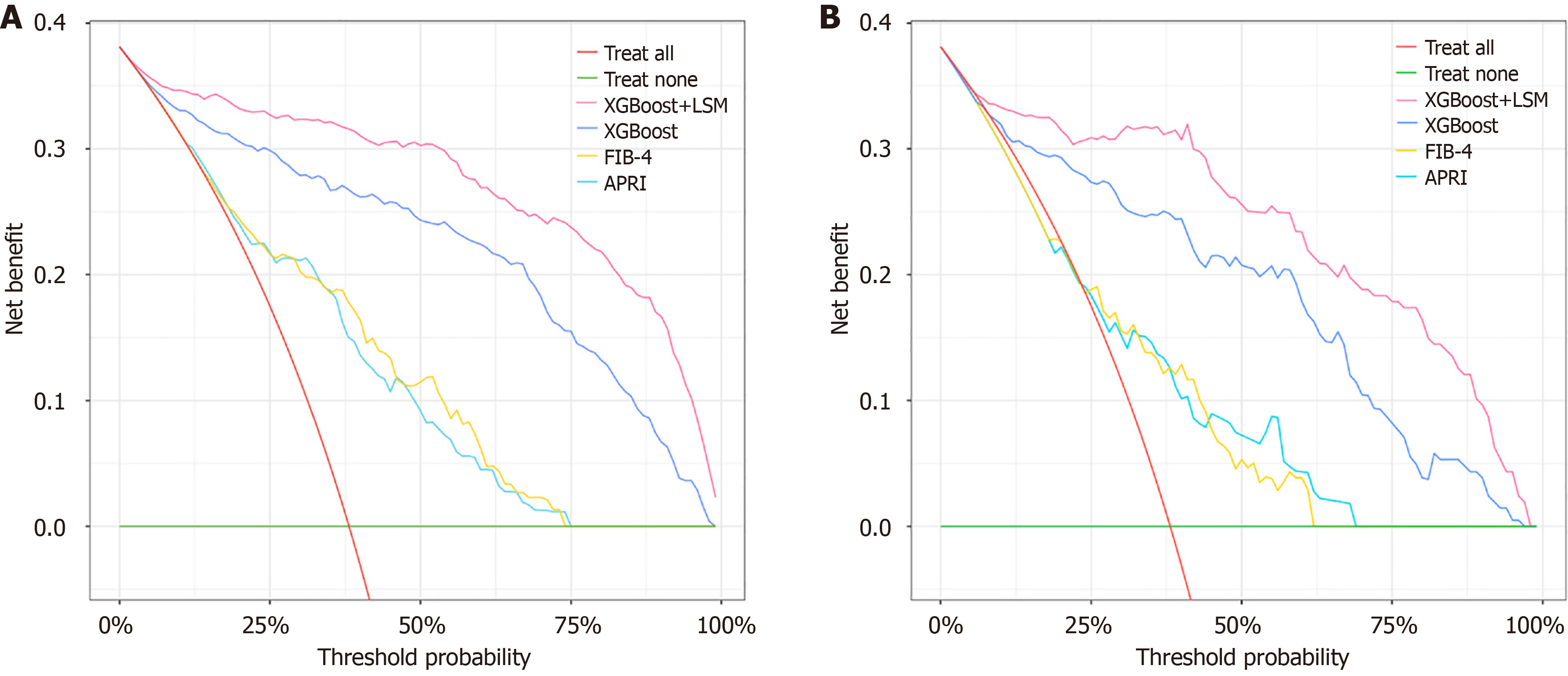Copyright
©The Author(s) 2025.
World J Gastroenterol. Mar 7, 2025; 31(9): 101383
Published online Mar 7, 2025. doi: 10.3748/wjg.v31.i9.101383
Published online Mar 7, 2025. doi: 10.3748/wjg.v31.i9.101383
Figure 5 The decision curve analysis of the Extreme Gradient Boosting model, Extreme Gradient Boosting + liver stiffness measurement model, aspartate aminotransferase to platelet ratio index score and Fibrosis index based on the 4 factors score.
A: Training cohort; B: Validation cohort. The Extreme Gradient Boosting models showed better net benefits than the aspartate aminotransferase to platelet ratio index score and Fibrosis index based on the 4 factors score. DCA: Decision curve analysis; APRI: Aspartate aminotransferase to platelet ratio index; FIB-4: Fibrosis index based on the 4 factors; LSM: Liver stiffness measurement; XGBoost: Extreme Gradient Boosting.
- Citation: Xiong FX, Sun L, Zhang XJ, Chen JL, Zhou Y, Ji XM, Meng PP, Wu T, Wang XB, Hou YX. Machine learning-based models for advanced fibrosis in non-alcoholic steatohepatitis patients: A cohort study. World J Gastroenterol 2025; 31(9): 101383
- URL: https://www.wjgnet.com/1007-9327/full/v31/i9/101383.htm
- DOI: https://dx.doi.org/10.3748/wjg.v31.i9.101383









